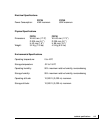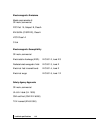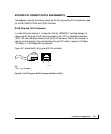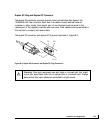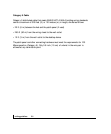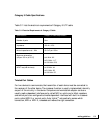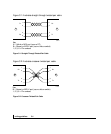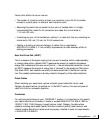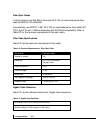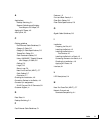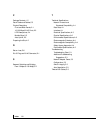
C-7cabling guidelines
Factors that affect the return loss are:
• The number of transition points, as there is a connection via an RJ-45 to another
connector, a patch panel, or device at each transition point.
• Removing the jacket that surrounds the four pairs of twisted cable. It is highly
recommended that, when RJ-45 connections are made, this is minimized to
1-1/4 inch (32 mm).
• Untwisting any pair of the twisted-pair cabling. It is important that any untwisting be
minimized to 3/8 inch (10 mm) for RJ-45 connections.
• Cabling or bundling of multiple Category 5 cables.This is regulated by
ANSI/EIA/TIA-568A-3. If not correctly implemented, this can adversely affect all
cabling parameters.
Near End Cross Talk (NEXT)
This is a measure of the signal coupling from one wire to another, within a cable assembly,
or among cables within a bundle. NEXT measures the amount of crosstalk disturbance
energy that is detected at the near end of the link — the end where the transmitter is locat-
ed. NEXT measures the amount of energy that is "returned" to the sender end.The factors
that affect NEXT and crosstalk are exactly the same as outlined in the Return Loss sec-
tion.The crosstalk performance is directly related to the quality of the cable installation.
Patch Cables
When installing your equipment, replace old patch panel cables that do not meet
Category 5e specifications. As pointed out in the NEXT section, this near end piece of
cable is critical for successful operation.
Conclusion
For optimum performance of your 1000BASE-T product, it is important to fully qualify
your cable installation and ensure it meets or exceeds ANSI/EIA/TIA-568-A:1995 or
ISO/IEC 11801:1995 Category 5 specifications. Install Category 5e cable where
possible, including patch panel cables. Minimize transition points, jacket removal, and
untwist lengths. Bundling of cables must be properly installed to meet the requirements
in ANSI/EIA/TIA-568A-3.



